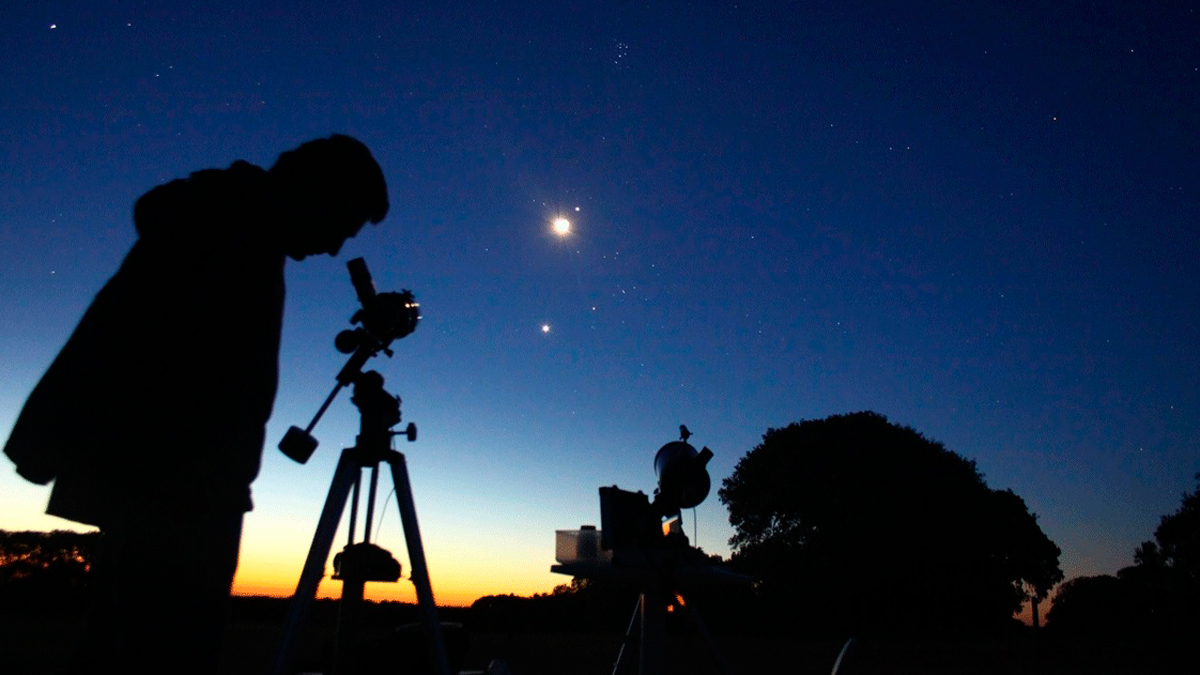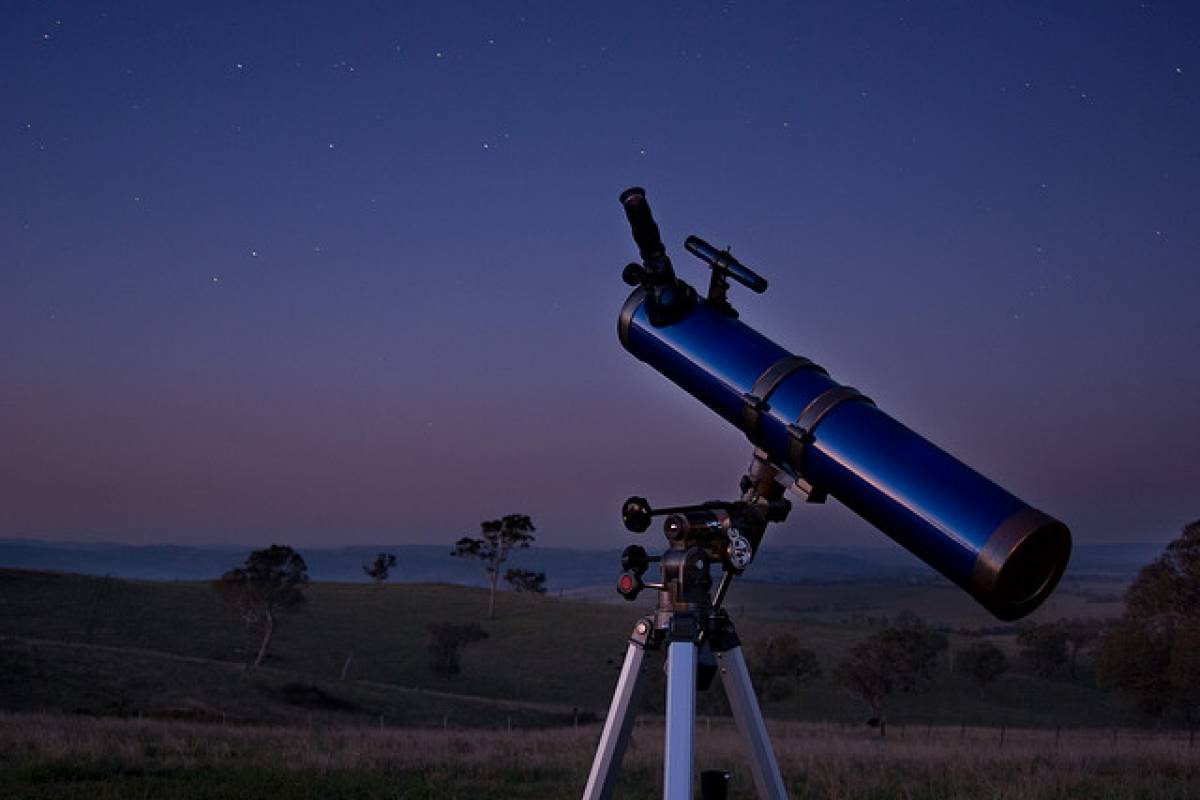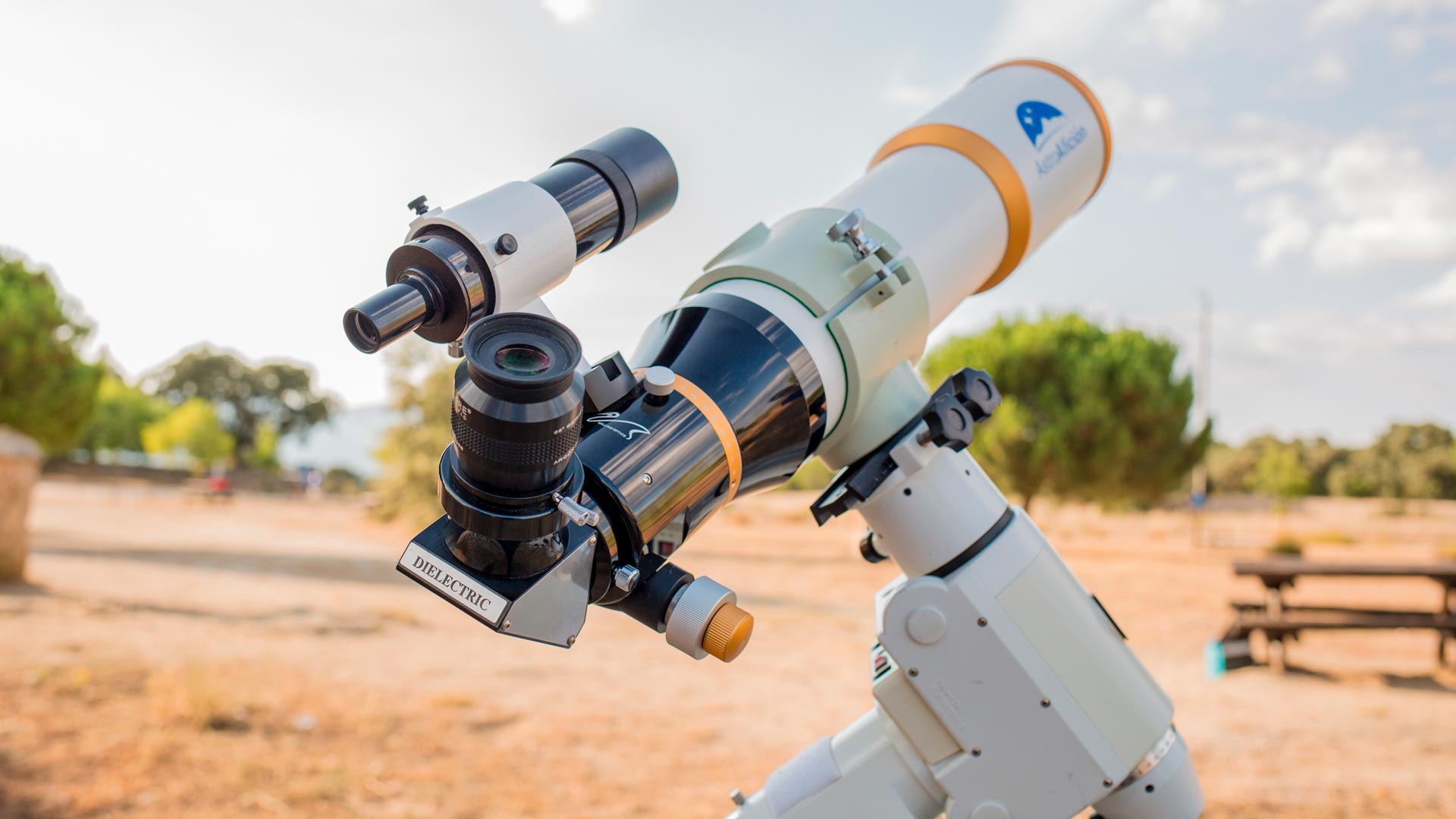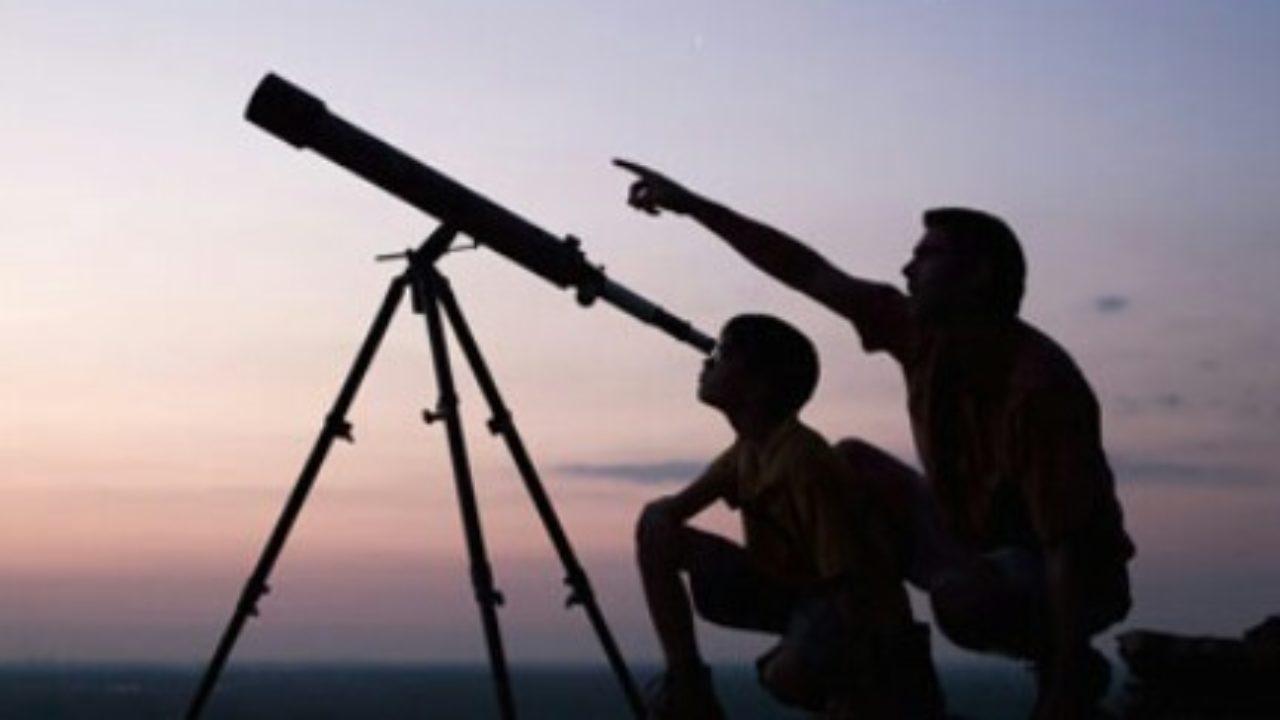Have you been interested in learning about the stars? Do you already know what instrument is needed to be an astronomy fan? Well, you need a telescope, but you need to get information about which telescope should you buy so that your experience is the best and in this blog we are going to help you with that.

Getting Started Basics
The effectiveness of initiation telescope it is related to the diameter or opening it has, and that information is established in millimeters. That is the main feature that should be observed in any telescope. In addition, you must have certain notions of optics and how to assemble it. A telescope can be made of lenses, called a refractor, or it can be made of mirrors, called a reflector.
It is likely that everything we have explained before will generate more questions than answers, but here we are going to explain all those aspects related to the knowledge and handling of a telescope. So you can start observing the skies like an expert.
It is recommended that the first telescope to be purchased should be a reflector type, which is between 100mm and 200mm in diameter, but if it is going to be a refracting telescope, then we recommend that you purchase one that is between 60mm and 90mm.
When you go to buy your telescope, you should ask if it has an eyepiece included, because if not, it is recommended that you buy one between 25mm and 40mm and if you do not have someone with you who has some knowledge of the matter When you are going to use it, it is also recommended that you purchase a map or night sky guide.
What to know before buying a telescope
In case you already know, by the simple mechanism of directing your vision to the sky, either with the help of a planisphere, or with a guide to the heavens or using recognition software, the arrangement of some Stars or constellations, it's time to start using a astronomical telescope.
It cannot be stated that there is a best astronomical telescope that other. It all depends on what your needs are and what kind of celestial bodies you want to observe. Probably a person will think that a certain type of astronomical telescope you are better than another and another fan may think otherwise, but if it is the initiation stage of stargazing, it is better that you are well informed of the most outstanding aspects.
But if you still don't know any figure or star from the night vault, then an optical instrument will not be of much help. If your intention is to give a telescope, it is always recommended that you give it along with a map of the heavens or a world map. There are also computer programs and applications that can be purchased for mobile devices with which celestial objects can be found.
Telescope or Binoculars
You can start with some simple binoculars, as they are a very good instrument to start with, and it is recommended that you explore the night sky with them before you go to buy a telescope.
The most common and appropriate binoculars are the 7×50, which means that they are equivalent to 7x magnification and 50mm diameter in the objectives, or also the 10×50, that is, 10x magnification and 50mm in diameter in the objectives. Other magnifications and diameters can also work, you just have to check yours and see what scope you have and if they fit the measurements we have suggested, but if your magnification and the diameter of the objectives are higher, so much the better.
The experience can be improved if you have a camera tripod to place the binoculars. In specialized stores they sell them, with the adapter that is needed to place the binoculars.
If you already have these tools, then you will be able to enjoy an experience very similar to what you will get when looking through a small telescope, it will be suitable for observing the satellites of Jupiter, the Orion Nebula, the Andromeda Galaxy and a large number of celestial bodies.
locate objects in the sky
Another very important activity that you will be able to do with these implements is to learn to locate objects in the night sky, and it will give you practice to be able to use a telescope in the future.
Once you have experimented with these devices, and have decided to purchase a telescope, it would be great if you could first practice with one, and, if possible, practice with several options. Ask your friends and acquaintances if they have one and ask them to borrow it. This activity will be useful when choosing what telescope to buy to see planets, It will let you know what type and size of telescope you feel most comfortable with.
If you do some research online, you might be lucky enough to find a group of amateur astronomers near where you live who organize outings to observe the Shooting Stars and it is likely that you can join some of them and take advantage of the telescopes and the experience of your new friends, which will help you decide on what telescope to buy It is sure that they will be very willing to help you.
How to choose which telescope to buy?
Of course, the first thing to consider is the cost. But a telescope with decent functionality is not excessively expensive. Most likely, to begin with, a telescope for beginners cost about 100 dollars. But if your budget is between 200 and 300 dollars, we assure you that you will find a telescope, either of the refractor or reflector type, that will have a sufficient and adequate aperture with great quality.
The cost will also be related to the type of mount or tripod you carry, along with the kind of optics you have. Another issue that must be taken into account is that the costs are very diverse, depending on the establishment where you are going to buy it.
So we recommend that you wander around and check around a lot or, better yet, check to see if there are any dealers in your area, because the best prices are found at dealers and at stores that specialize in instruments and telescopes astronomical. Although we always have the resource of buying them online and finding a good offer, for this reason we recommend that you review all the possibilities to know what telescope to buy
Types of optics and mount to know which telescope to buy
When you are deciding which telescope to buy, you have to take into account two fundamental questions: the type of optics and the type of mount, and for that we are also going to offer you our help.
Types of optics
As we explained before, there are two types, refractor and reflector.
refracting telescope
We have to know that the useful range of a telescope is directly related to its diameter or aperture. If it is a telescope for a beginner, one of the refractor type, which is between about 60mm and 90mm, or a reflector between 100mm and 200mm.
Characteristics, Advantages and Disadvantages of a Refractor Telescope
- Refracting telescopes are built exclusively by lenses.
- It requires almost no maintenance.
- Easy to use also as a spotting scope.
- Very good for observing Solar System objects.
- They are small or medium opening.
- If we want a medium power, the tube can be large and unwieldy.
Reflecting telescope
The mechanics of reflector-type telescopes, which are also called Newton-type, is based on the use of curved mirrors.
Characteristics, Advantages and Disadvantages of a Reflecting Telescope
- More aperture, and for that reason more power, for an affordable price. It will give you many observation possibilities.
- Good for observing both the Solar System and faint objects such as nebulae and galaxies.
- Knowing the proper techniques, you can build it yourself, the exception is probably that you will need to purchase a parabolic mirror.
- The tube is open, it does not have a lens that closes it, for which reason the mirror, which is located at the bottom of the tube, requires maintenance, which in this case consists of having it aluminized a few times, depending on the use and its handling.
- The posture that must be assumed for observation can sometimes cause us discomfort, because the eyepiece is in the front part and its location may be very low or very high.
catadioptric telescope
These are special, it is a type of professional telescope, because catadioptric telescopes have been built from a mixture of lenses and mirrors, they can also be found with the type names Schmidt-Cassegrain, Maksutov, and others.
Characteristics, Advantages and Disadvantages of a Catadioptric Telescope
- It requires almost no maintenance.
- Their opening can be medium or large with a short and compact tube, so they are easy to handle and transport.
- Comfortable for installation and observation.
- High cost.
mount types
The fact that a telescope has good optics is of no use if it does not have a sturdy mount. This is the second element that we must take into account when we are choosing what telescope to buy If the mount is unstable, trembles, or does not allow us to make very precise movements, it will absolutely hinder our observation, we will feel frustrated trying to direct our vision towards an object without being able to do so.
The types of telescope mounts that are commonly used are azimuth, equatorial, and computerized:
The Altazimuth Mount
The altazimuth mount is the one that will allow you to directly execute up-down and right-left tilts.
Characteristics, Advantages and Disadvantages of an Altazimuth Mount
- Simple, takes up little space. More economical.
- For reflectors, there is the Dobson type, which resembles a simple box that is placed on the ground.
- The tracking of the stars must be done manually.
Equatorial mount telescope
The equatorial mount is the one used by placing an axis parallel to the axis of rotation of the Earth.
Characteristics, Advantages and Disadvantages of an equatorial mount
- It allows tracking the star, counteracting the rotational movement of the Earth, by the simple mechanism of turning a wheel.
- There are mounts that have the ability to automate this rotation by means of a motor.
- It is much more expensive and sometimes quite large.
- It requires prior learning for its handling and assembly, but it is easy to learn.
Computer Mounted Telescope
This type of mount is equipped with a computerized search system, it is made up of electronic components that make it easy to search for celestial bodies, among which are GOTO, Autostar, and many others.
Characteristics, Advantages and Disadvantages of a computerized mount
- Look for and follow the objects to be observed.
- The price is high, although they are becoming more affordable.
- The team must be oriented before starting an observation session.
- It creates an additional difficulty for those just starting out with astronomical observing as it may prevent them from learning on their own.
What if it's a telescope for a child?
Sometimes, it is the children who ask for a telescope as a gift. It is important to encourage this type of science hobby in them, so the opportunity should not be missed. Our recommendation is that you do not give him a cheap telescope, because he will be frustrated and disappointed.
It is worthwhile to buy him an initial observation telescope that meets the requirements that we have mentioned before, to involve him in the purchase process, so that he learns the importance of the measures and the elements that make it up, so that we are promoting in the child the love for astronomy, and, even if he does not become a brilliant astronomer in the future, in any case we would be providing him with a very interesting hobby that will make his imagination expand towards other areas of science.
How important are increases? when we are deciding which telescope to buy?
The magnifications do not really have any significance, although the advertising on the box says so, because they are not related to the telescope itself, but to an additional piece that is the eyepiece.
The usual thing is to be able to count on two or three eyepieces of different magnifications, because each body of the celestial vault needs certain magnifications to be able to be well observed. Therefore, sometimes it will be better to use many, and other times it will be better to use few.
Magnifications should be proportional to the type of telescope. Normally, double the opening in millimeters is considered as the magnification limit. This means that for a 60mm telescope, the limit of magnification is 120. But all those magnifications can only be used in a practical way in very unique opportunities, like observing the moon, the conditions of the atmosphere.
The problem is that, many times, if more magnifications are placed, practically nothing can be seen, because everything will be very blurry and the details of the celestial body that we are observing will be lost. So if the telescope case announces that it has a diameter of 60mm, but with 425x magnification, we advise you not to buy it.
It can even be stated that it is advisable for the eyepiece to have low magnifications, which guarantees us that it gives a large field of view, as is the case with eyepieces from 25mm to 40mm. The normal thing is that they are not included in the telescope, and that we have to acquire them separately.
Of course we advise you to buy it, with the warnings that we have made before, because without the eyepiece you may come to the conclusion that your telescope looks bad or it is very difficult for you to locate objects in the sky.
To find out a little more before you decide which telescope to buy
Perhaps this information is not so necessary at first, but in any case we indicate that another characteristic that may influence what telescope to buy is the focal length, which is linked to the size or length of the tube, and also the focal ratio, which refers to how many times greater the focal length is in relation to the aperture.
An example of this would be that if the aperture is 60mm, and the focal length is 600mm, which is 10 times the aperture, then the focal ratio will be 10. On the telescope case it may be indicated as follows: f/10.
If the focal ratio is small, say less than 6, the telescope will be bright, suitable for viewing faint objects such as nebulae or galaxies. If it is long, which is considered more than 8, you will have excellent contrast to observe planets of the solar system, such as moons, satellites and planets. A focal ratio of between 5 and 10 will be indicated to be able to observe almost everything. Anything outside of that ratio range is not recommended, at least for a first telescope.
The focal length will also indicate the amount of magnification an eyepiece can offer. To do this you just need to divide the focal length of the telescope by the focal length of the eyepiece, which is usually the number that is printed on the eyepiece in millimeters. An example of this calculation is as follows: telescope focal length = 1000 mm, with a 25 mm eyepiece, dividing 1000 / 25 will give the amount of 40x magnification.
Another tip so you can choose which telescope to buy
Whenever you want to buy a telescope or any other astronomical device, it is recommended that you go to a specialized house. There you will surely find quality, variety and the best prices.
After you have decided which telescope to buy…
If you have already purchased it, proceed to unpack it with extreme care and follow the instructions on the box to assemble it. After armed, get a map of the skies or the help of some friends who know the subject and start locating celestial bodies. If you have found an observation group near your area of residence, we advise you to join them, until you have enough practice to be able to do it on your own.
We must also warn you that looking through a telescope is not the same as seeing photographs, so probably the celestial bodies you encounter will not be seen in large size or in color, and, in any case, it is not usual that you can see the objects at the first opportunity. It takes practice to train your eyes and get them used to this activity. Don't despair if it takes you a few months to do it.
Other sighting skills to learn include finding a dark location, protecting yourself from the cold even in the summer season, having a red light handy to view maps so your vision isn't intoxicated by a white light, never place your telescope on asphalt or surfaces that radiate heat or in places where hot air turbulence occurs.





